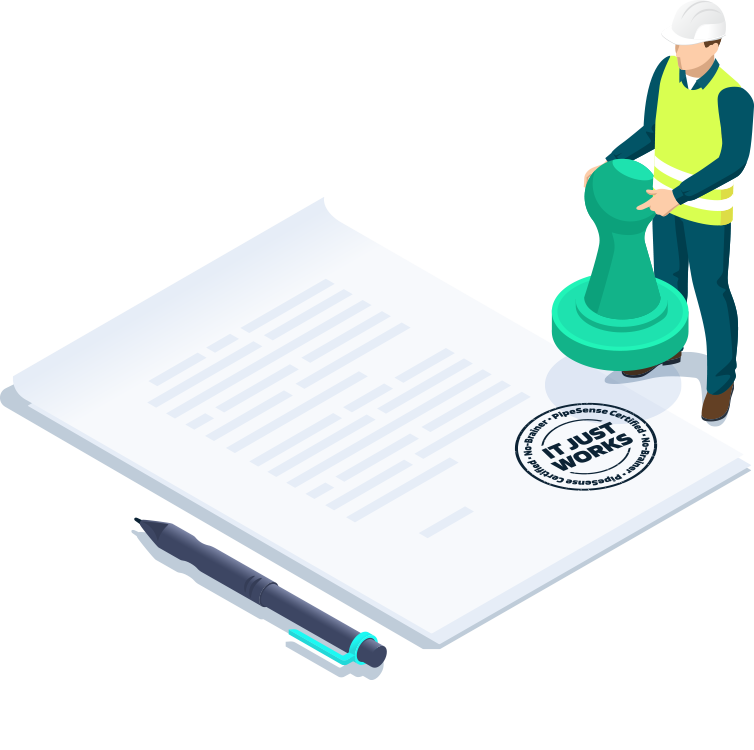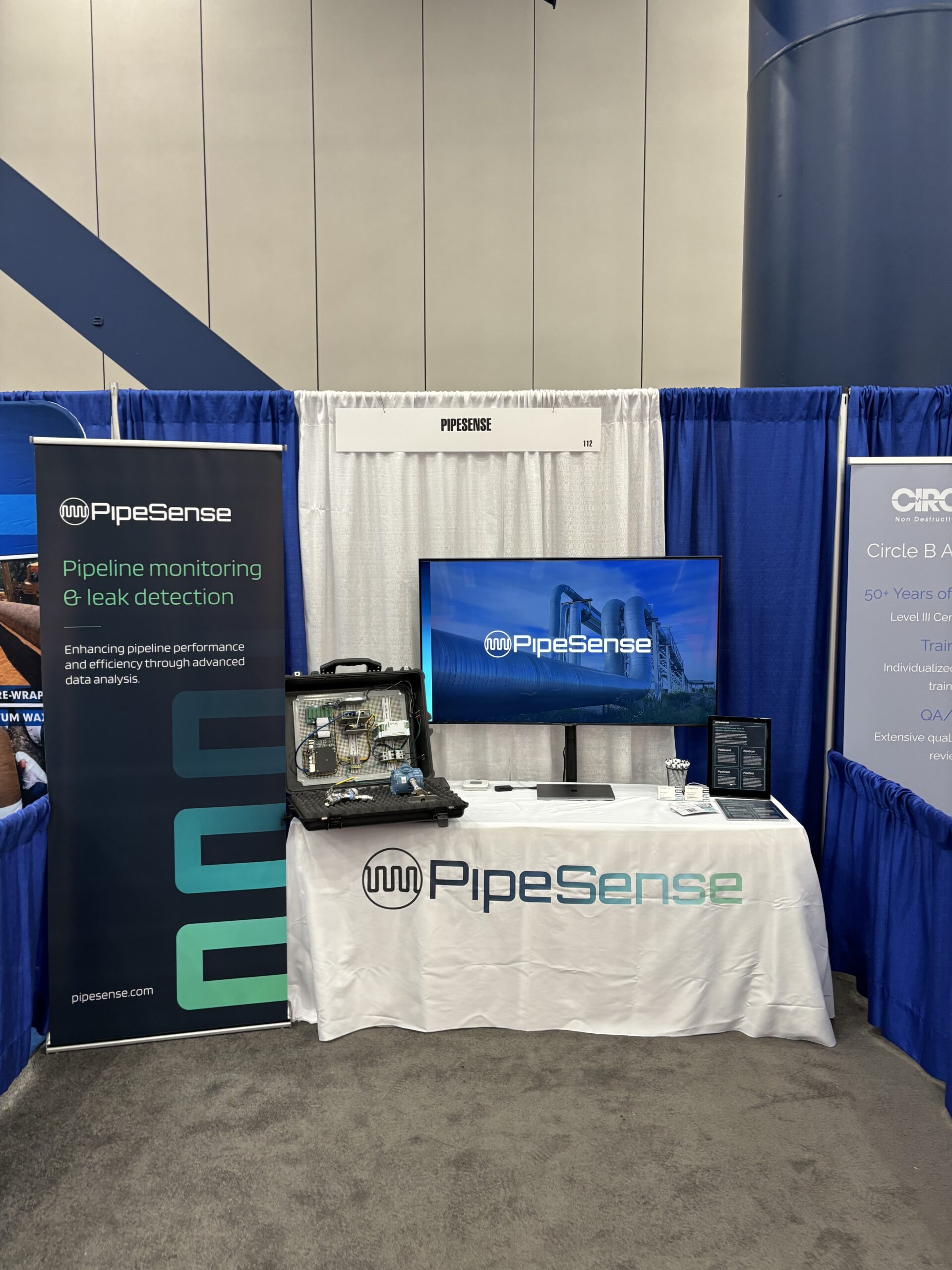How advanced pipeline leak detection eliminates costly, time-consuming recalibrations

We call it how we see it. Recalibration is a full-time job disguised as routine upkeep. Every pump startup, valve shift or pressure swing sends traditional pipeline leak detection systems spiraling. Sensitivity drops. Accuracy erodes. And suddenly, your crew’s back in the field, re-tuning a system that was never designed to keep up in the first place.
It’s a cycle that drains more than time. Between truck rolls, downtime, labor costs and lost focus, recalibration has become the silent tax operators pay just to keep legacy systems marginally functional. And the kicker? Even after all that work, false positives are considered part of life and actual leak events sneak by unnoticed.
It all boils down to nonsense vs. common sense. Instead of pouring time and resources into a system that feeds you inaccuracy in return, PipeGuard learns and autonomously recalibrates using real-time pressure pulse sensing, GPS time-syncing and an AI engine trained on over 35,000 real-world pressure events. While benefiting from a pipeline leak detection system that’s exponentially more precise, you can use your time building the future instead of handholding a tool you can’t count on in the first place.
Why legacy pipeline leak detection systems still rely on calibration
Traditional pipe leak detection systems weren’t built to think; they were built to react. Most rely on mass balance or volume balance calculations, governed by static thresholds and pre-set calculations of what “normal” looks like. The problem? Pipelines don’t do normal. They surge, shift, expand and contract with every operational change. Start a pump? Pressure spike. Switch products? Flow rate changes.
So, when those static assumptions no longer match real-world conditions, legacy pipeline leak detection systems start to glitch out and suddenly routine operations trigger constant alarms. The only fix? Manual recalibration — over and over again.
Recalibrations might keep the system limping along, but they’re impossible to scale. Every adjustment requires boots on the ground, operator expertise and (far too often) delays in operations. Multiply that across a network of assets and suddenly your budget’s drained, your team’s exhausted and your system still can’t tell the difference between a pinhole leak and a pressure swing.
Quit your babysitting gig with PipeGuard
You’ve got better things to do than nurse a leak detection system through every pressure bump, product change or seasonal shift. Legacy tools demand constant handholding — manual baselines, fine-tuning and field visits just to keep them from crying wolf. PipeGuard was built to break that cycle. From day one, our pipeline monitoring software trains itself on your pipeline’s unique behavior, filters out the noise and adapts in real time so your crew get back to higher-value work.
Short-term: Plug in. Move on.
Traditional pipe leak detection systems demand a manually entered baseline before they can get to work. PipeGuard builds its own.
Before PipeGuard goes live, our technology enters a two-week commissioning phase. This live-action training camp allows the pipeline monitoring software to study your pipeline and create a 360-degree understanding of your pipeline’s behavior in real-time. Studying every nuance, fluctuation and signature movement, each unit captures pressure data at 1,000 samples per second.
But this isn’t passive learning. PipeGuard actively runs simulated leak scenarios using leak-release manifolds designed to mimic real-world leaks that are most probable under your operating conditions. These events aren’t hypothetical. They’re field-simulated pressure pulses that train PipeGuard in the environment that matters most.
This flood of high-speed pressure data is used to train custom onboard signal filters (algorithms that live directly on each PipeGuard unit). Each device independently analyzes pressure data in real-time, recognizing the difference between a noisy valve and a negative pressure wave worth acting on. The result? A smart, streamlined pipeline leak detection system trained specifically for your pipeline’s quirks. No ongoing calibration, no guesswork and absolutely no “we’ll fix it in post.”
By the time commissioning is complete, your pipeline leak detection system is fully trained and battle tested. Rather than moving forward with a generic pipeline leak detection system calibrated by limited data, you have a pipeline integrity solution that learns your pipeline’s fingerprint in high resolution.
Long-term: Trust it. Forget it.
Our pipeline monitoring software isn’t just a quick learner. It’s a permanent student of your pipeline’s behavior. Once deployed, it shifts from setup mode into continuous optimization, using every operational fluctuation as an opportunity to sharpen its accuracy. It doesn’t just log events; it interprets them in context — recognizing how your system behaves under load, how it reacts to environmental shifts and how subtle variances build a more complete picture of normal.
PipeGuard keeps evolving in the background, refining its detection logic to stay ahead of changes without ever falling behind. It adapts when new compressors come online, when seasonal flow rates shift and when maintenance introduces new variables.
All without your crew lifting a finger.
How it works: Constant evolution
Our pipeline monitoring software isn’t dependent on a control room or master server to function — it’s decentralized by design. Each field unit is its own first responder, independently monitoring pipeline pressure for short-duration pulses that signal an actual leak event. Not a slow product loss, but an instantaneous negative pressure wave that moves faster than traditional pipeline leak detection systems can register.
The sensor picks up that signature, syncs its timestamp via GPS and stores a full two-minute window of data (one minute before, one minute after). After the individual field unit has completed its triage, information gets pushed to the central system for deeper analysis.
Then, our machine learning gets to work. Each event is transformed into a 3D frequency signature and compared against a growing library of over 35,000 real-world pressure pulse patterns. Leaks, valve chatter, control system noise, compressor surges — you name it, our pipeline leak detection technology remembers and files it. So, when a signal matches the known fingerprint of a leak, the alert is instant and accurate. If it’s background noise, it gets tossed. But most importantly, in both instances, each event and nonevent become a part of PipeGuard’s ever-changing blueprint for pipeline integrity.
What this really means for operators
PipeGuard was designed with one job in mind: to make your life less chaotic and your leak detection system less needy. When your pipeline monitoring software can think for itself, you’re not stuck playing technician every time the weather shifts or the flow rate bumps.
The real costs of false positives
Recalibration runs? Cancelled
No more rolling trucks to nudge sensitivity. No more techs stuck babysitting finicky systems. PipeGuard learns your pipeline once and keeps adapting — automatically, in real-time — so your crew can get back to real work.
What to look forward to
- A streamlined workload
- More bandwidth (and a happier team)
- A line item labeled “savings” on your next OPEX report
More uptime, fewer disruptions
While legacy systems fumble during flow changes and restart cycles, PipeGuard keeps running, learning and monitoring without skipping a beat. You stay live and your pipeline keeps humming.
What to look forward to
- Higher productivity across your team
- Fewer operational slowdowns
- Reliable, round-the-clock performance
Fewer field hours (and big OPEX wins)
When recalibration isn’t part of the equation, your team isn’t spending hours in the field doing work that could’ve been avoided. Fewer truck rolls, less red tape and no downtime just to keep your detection system semi-functional.
What to look forward to
- A lighter load on your crew
- Less logistical chaos
- A noticeable drop in operating expenses
Rock-solid consistency
Whether it’s a change in flow rate, a new compressor profile, fluctuating product types or extreme environmental conditions, PipeGuard adapts in real-time. Our pressure modeling evolves with your pipeline, maintaining pinpoint accuracy no matter what’s happening above or below ground.
What to look forward to
- No need for seasonal recalibrations
- Instant adaptation to operational shift
- One less system to second-guess
Precision you can trust
PipeGuard doesn’t just detect pressure changes — it understands them. By validating each alarm against a library of 35,000+ real-world signatures, our pipeline leak detection technology always knows the difference between an actual leak and everyday turbulence.
What to look forward to
- Virtually eliminating false positives
- Sharper situational awareness
- Sleeping soundly through the night
Goodbye, recalibration. Hello, peace of mind
We’re barreling towards 2030. It’s time to stop babysitting your pipeline leak detection system.
With autonomous pressure modeling, GPS-synced sensing and an AI engine trained on 35,000+ real-world events, PipeGuard adapts and evolves to become a faster, more granular and more precise system.
The real win for operators? A system that demands less and delivers more.
You’re not just stepping away from recalibration. You’re entering a new era of pipeline integrity. One where your monitoring system works quietly in the background, and you never have to second-guess the accuracy of your alarms.
Don’t take our word for it.

What does it take to be PipeSense Certified?
A LOT, and that’s by design. Explore what our quality seal means to us and, more importantly, what it means for you. (Hint: More free time, less frustration.)
